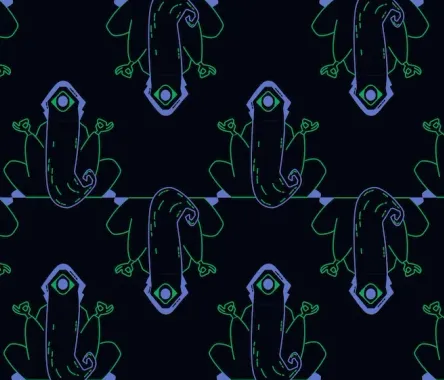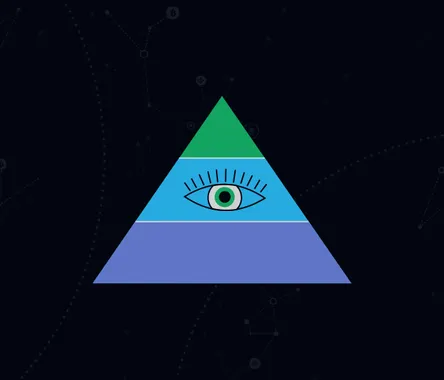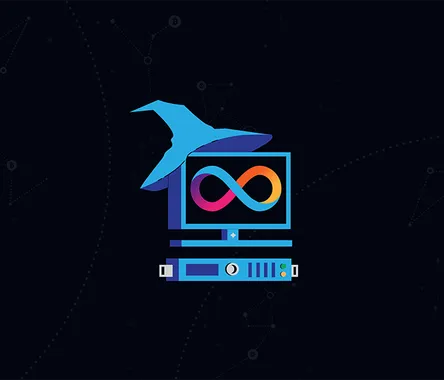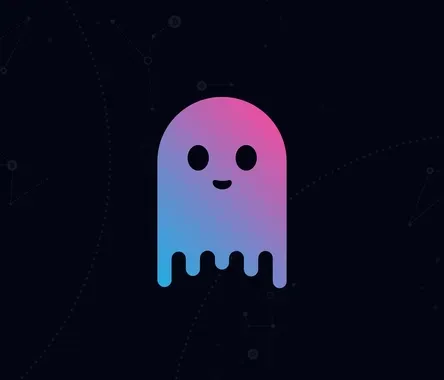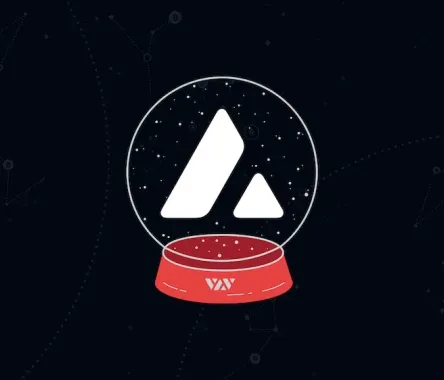What is Loopring?
Loopring (LRC) is a Layer-2 protocol for scaling Ethereum. Unlike many other Layer-2 projects, the Loopring protocol was created for a specific application and other projects can not create their products on its basis. While other L2 solutions aim to build platforms for other protocols/projects, the Loopring Foundation focuses on building its own products and capabilities on top of its Layer-2.
The team's main goal is to create a set of tools that will allow users to trade, as well as grow and store their assets. Loopring consists of several components: a relay, a non-custodial L2 exchange, and a smart wallet. The team considers all these components as a whole to be the Loopring project.
Thanks to the ZK-Rollups technology, the network has low fees and is capable of processing thousands of transactions on Ethereum using smart contracts. Loopring also inherits Ethereum's security — users have access to their assets under all circumstances, and exchange operators are limited to the behavior allowed by the protocol. The protocol is open-source, validated, and not dependent on any external validators.
Development of Loopring began in 2017, after which the protocol has undergone significant changes and transitions to new versions. The current version of the protocol, v3.8, is the fifth deployed version. In August 2017, during the initial coin offering (ICO) of its digital token LRC, the Loopring Foundation raised 120,000 ethers, worth $45 million at the time. But then changes in China's ICO regulations forced the team to return about 80% of all funds raised to investors. In 2020, Loopring launched its own decentralized exchange after trying to find third parties to create a DEX based on the protocol. Loopring Exchange offers both order book and automated market maker (AMM) trading, and also functions as a payment application.
How does Loopring work?
Loopring is based on ZK-Rollups technology, which uses zero-knowledge proofs. ZK-Rollup is a solution in which all funds are held by a smart contract on the main chain, while computation and storage are performed off-chain. Loopring 3.0 takes computation off-chain from the Ethereum main network, which significantly improves throughput (2,025 transactions per second) and reduces fee costs down to as low as $0.00015. User account balances and transaction history are organized off-chain in a Quad-Merkle Tree. In Loopring, all user transactions and requests are grouped and processed in large batches (several hundred transactions in a single batch) off-chain with a state root after each batch process, and then published to the Ethereum blockchain. This allows state roots to be reconstructed and verified. As a result, Loopring inherits 100% of Ethereum's security without relying on external validators or consensus.
An important part of the Loopring protocol architecture is the Relayer (also known as Operator), a closed-source system that interacts with the protocol to run ZK-Rollup and maintain Loopring L2 and products on top of it. It hosts and updates the off-chain Merkle tree, creates rollup blocks, generates zkSNARK to prove their validity, publishes data and proofs to Ethereum, and much more. The Looping Relayer is optimized to match proof generation and order matching. The Looping Relayer API can be used by developers, users, and other applications that want to perform gasless, high-speed trading and transfers on Ethereum. The Loopring relay is managed directly by the Loopring team.
Loopring gives users full control over their funds which are locked into a smart contract. When initiating a transaction on a Loopring exchange, its users first transfer their funds into a smart contract managed by the Loopring network. The Loopring exchanges will then make all of the calculations needed to complete the transaction to Layer-2. Loopring will send all transactions in a batch to the Ethereum blockchain to complete the transaction between users. Each batch is added with zero-knowledge proofs to the Ethereum blockchain. This method increases user confidence in the authenticity of the transaction and its security and makes sure that unwanted parties will not be able to hack their accounts.
How to use Loopring?
Any wallet that supports ERC-20 tokens is suitable for working with Loopring. For example, such are Metamask and the native Loopring Wallet (available on Android and iOS). First, users need to go to the Loopring app page and connect their wallets to the app. Upon the first connection, the Loopring L2 Account needs to be activated by topping it up with one of the following tokens: USDT, ETH, LRC, DAI. This can be done by card, by transfer from another account/exchange, or from L1 (in this case users will have to pay a fee for gas on Ethereum). When refilling an account, the funds are transferred into a smart contract, which receives the assets and "maps" them to a slot in the Merkle tree, which only the user can manage. Аssets can be withdrawn from the contract at any time, even if Loopring disappears. Users are charged a flat fee for L2 transfers, which is currently $0.05.
The main product available in the Loopring app is а DEX, which works with an orderbook and an automatic market maker (AMM). The Loopring fee for a swap is 0.3%, 0.2% of which goes to liquidity providers (LPs), with the remaining 0.1% going to relay and protocol fees. The fees are charged in the token that the user purchases.
LPs receive a fee of 0.2% of all transactions in the pools they provide liquidity to, in proportion to their share. To become an LP on Loopring, users need to navigate to the "Invest" tab at the top of the Loopring app and select which pool they want to provide liquidity to. Although making a deposit into a pool requires no gas, there is a small transaction fee.
If a user prefers to trade a pair on the books rather than through the pool, they need to click on the "Trade" tab at the top of the dApp’s interface and select "Order book". The order book supports limit orders. Makers receive rebates on their orders that get filled on the books. The rebate is 0.02% (2 bps). Therefore, for any limit order waiting in the order book that eventually is matched with another user’s order, you can earn 0.02% of the order amount — i.e., a negative fee.
The Loopring app also supports NFT operations. Through the "L2 NFT" tab users can send and receive NFTs, as well as mint new tokens.
Through the "L2 Assets" tab, users can withdraw assets from their Loopring L2 account back to Ethereum L1. To do this, they must select the asset they wish to withdraw and specify the amount. Withdrawals can take anywhere from 5 to 30 minutes or several hours. There is a fee for processing the withdrawal, as the Loopring relay has costs to process these transactions (processing power to prove ZK and gas overhead to publish the accumulation block to Ethereum). This fee varies depending on the L1 gas fee and is usually less than half the cost of transferring the token to L1.
Loopring staking
Although previously there was LRC token staking available, the team has moved away from this mechanism in the new version of the protocol. LRC tokens will now be used to incentivize behavior that helps the entire protocol. In the future, token distribution parameters will be customized by the Loopring DAO, but as of the time of writing, the rewards are distributed among participants as follows: 80% goes to liquidity providers on Loopring and AMM order books. At least 50% of that share is allocated to LRC-related liquidity. Then, 10% of the fees go to insurers — users who invest in a safety net insurance fund, and another 10% to Loopring DAO, which decides how to spend these funds. Possible solutions for funds include redemption and burning, non-permanent loss protection, additional liquidity incentives, grants, etc.
The LRC token
LRC is the native ERC-20 token of the Loopring protocol. It is used to incentivize desired behavior for the protocol by liquidity providers, insurers, and DAO managers. Protocol fees come from Loopring L2 economic activity and go to productive members of the Loopring network and the LRC itself. The total supply of tokens is 1,375,076,040. The initial allocation of tokens was as follows: investors - 50%; contractors, auditors, exchenges - 10%; teams - 20%; Loopring Ecosystem Advancement Fund (LEAF) - 20%.
Is Loopring safe?
Loopring has more than 30 regular members, 23 of whom are software engineers.
Loopring's CEO is Steve Gow. He went to the University of Science and Technology of China when he was just 15 years old. There he received his Ph.D. in computer science in 2005 and began his career at Intel as a software engineer and technical manager. In the years that followed, Steve Gow dedicated his work to developing and customizing ROMs for Android. In 2015, he joined Cheetah Mobile, and in early 2018, Steve founded the blockchain company Dora Network.
Loopring's chief marketing officer is Jay Zhou. He previously worked in risk management at PayPal and also previously worked at Ernst & Young. He was also one of the principal founders of SJ Consulting.
Ecosystem & Partners
Loopring has partnered with GameStop to create an NFT Marketplace. The company also became a strategic ecosystem partner and investor for Taiko, a new general-purpose rollup.
In June 2022, the team launched another Loopring Grants round for community members creating tools, apps, and educational content that help grow the Loopring L2 ecosystem.
What's next?
The team continues their work on new direct bridges on Loopring L2, as well as direct centralized exchange bridges, which will give users the ability to transfer funds quickly and cheaply from major CEXs.
Loopring also plans to initialize a Loopring DAO during the third quarter of 2022. The DAO will receive 10% of all protocol fees. The funds' allocation will be decided by the members of the DAO (the owners of the LRC) through a vote. The Loopring Smart Wallet is also being actively worked on — the addition of the Arbitrum layer is being finalized, and another Layer-2 solution, Optimism, is expected to be introduced next.
